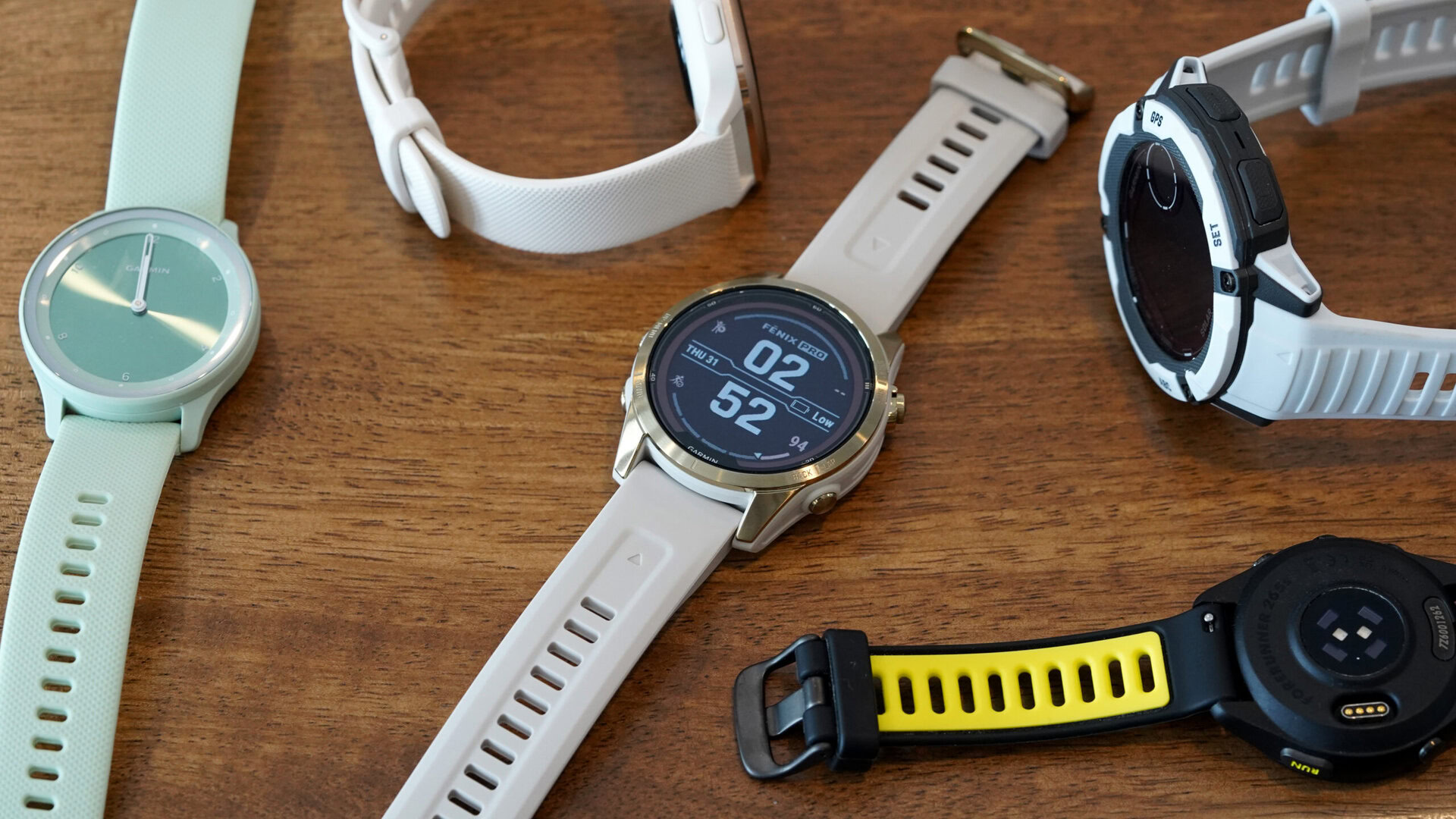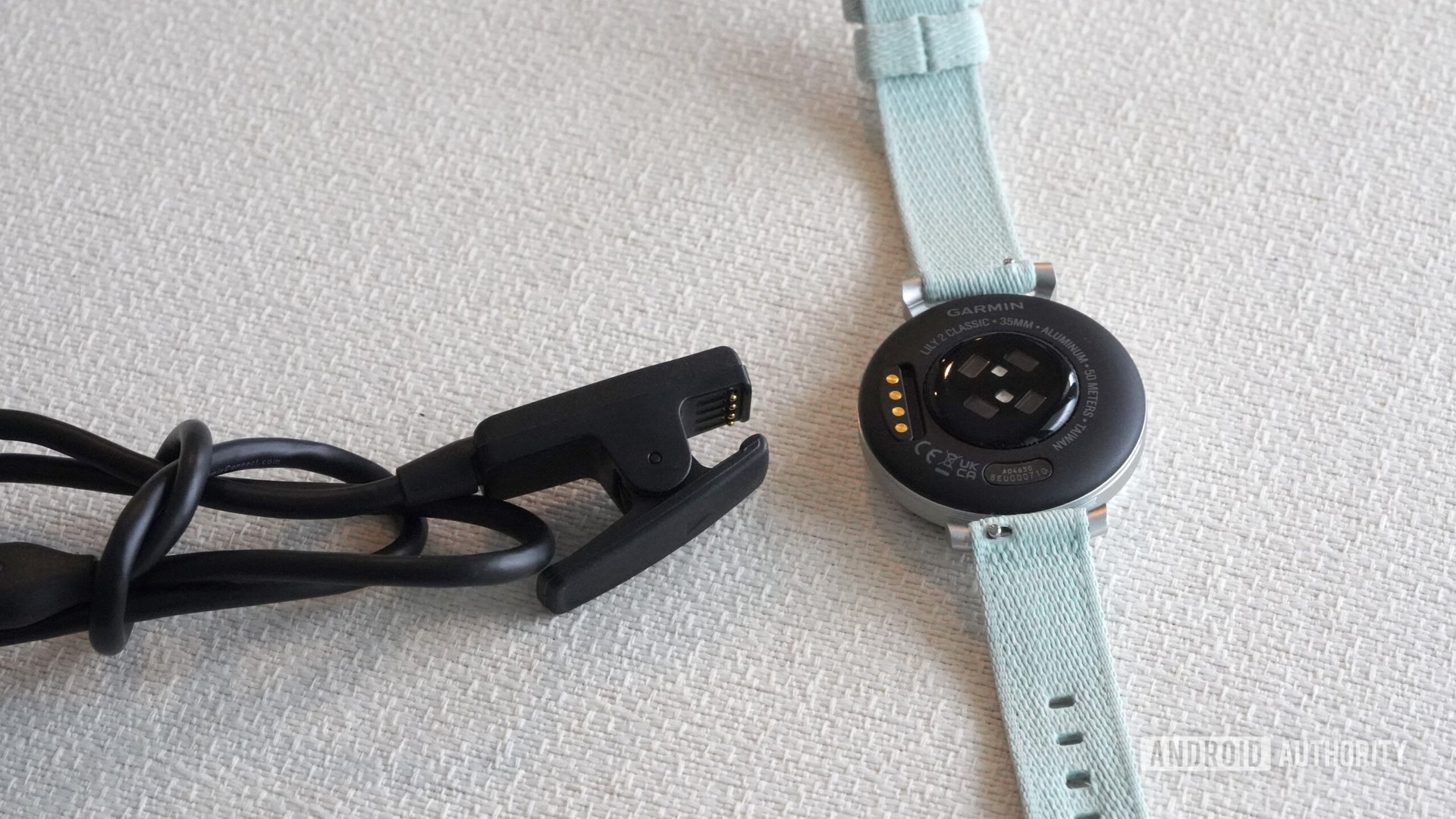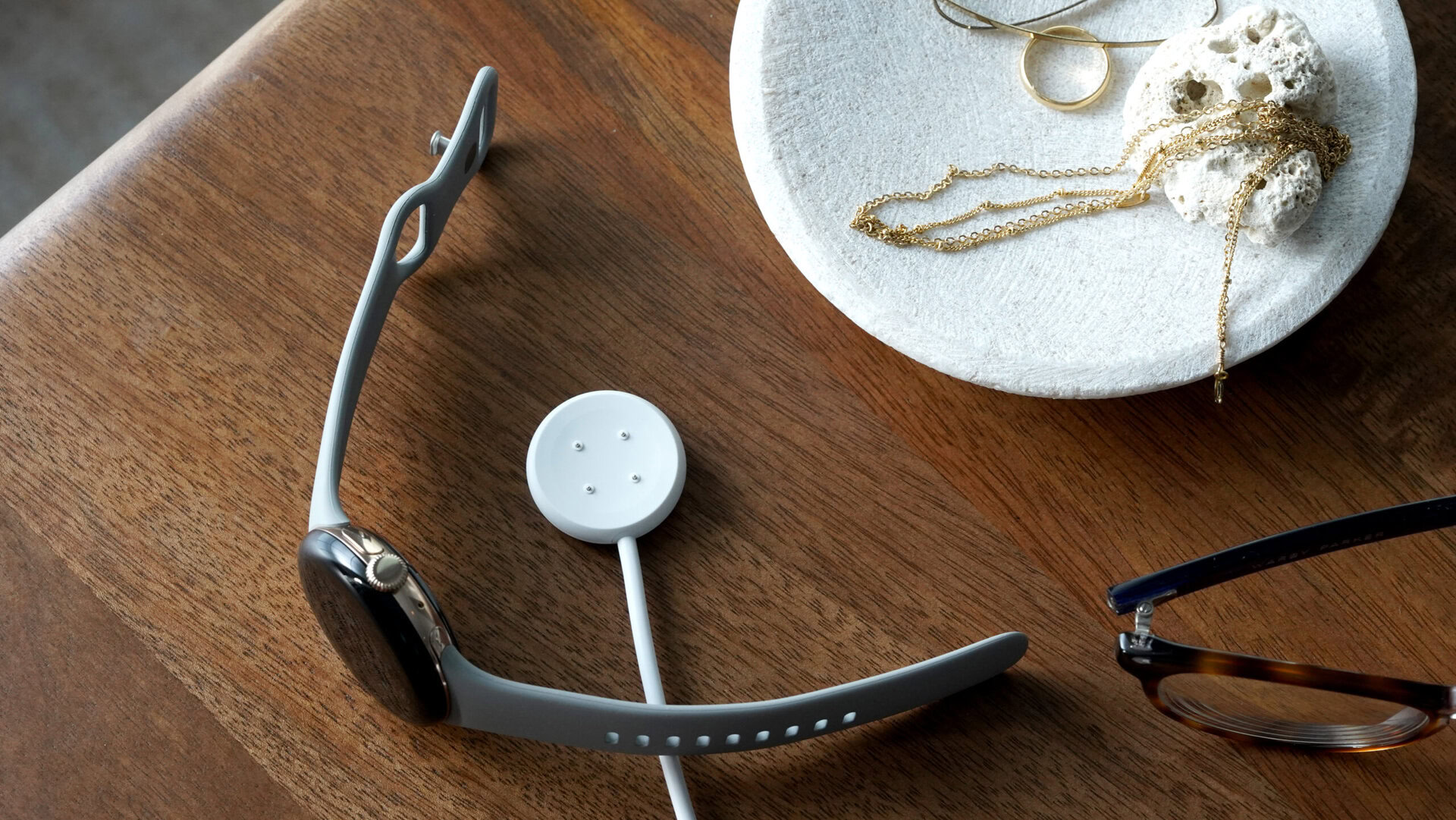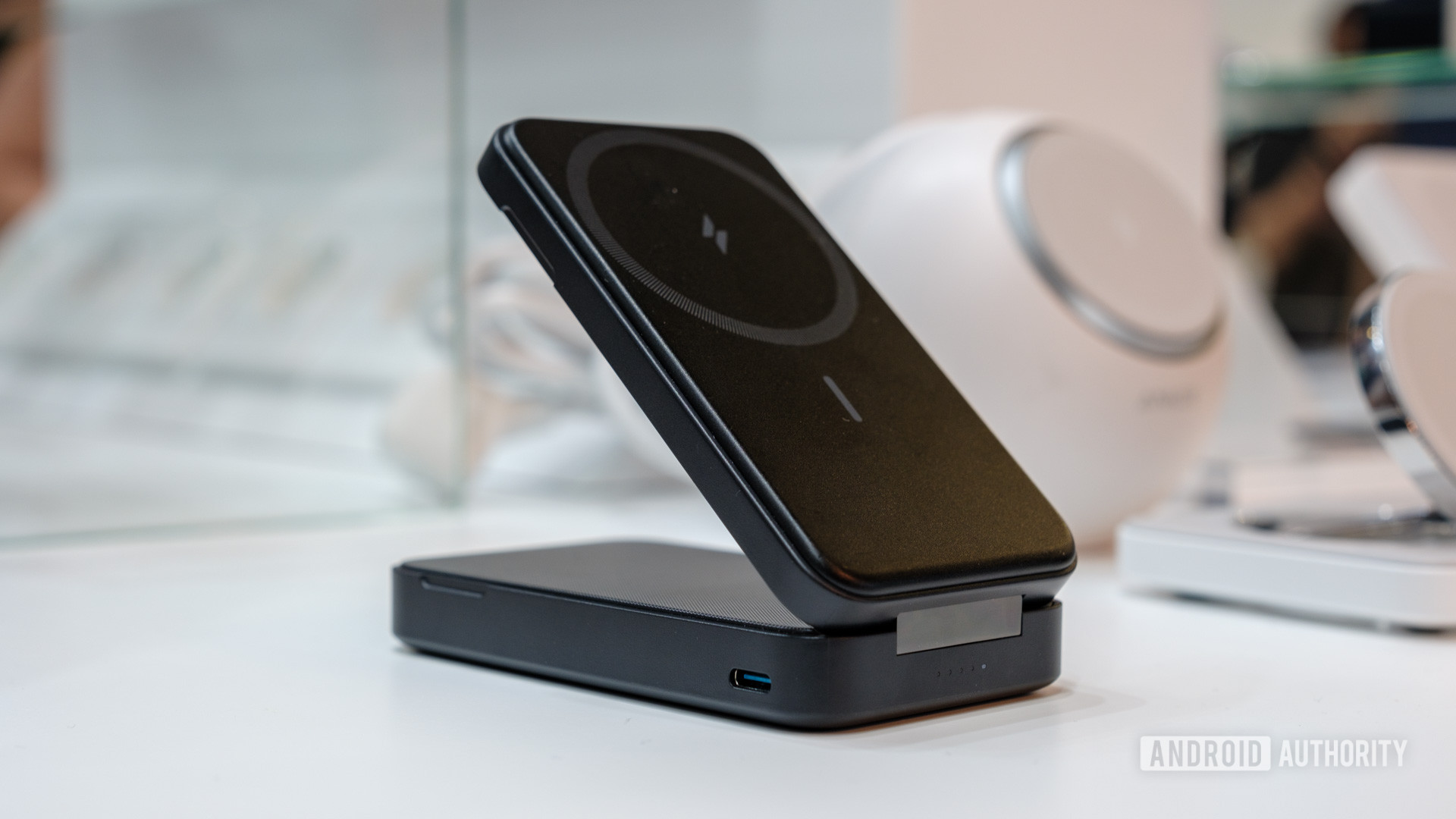Affiliate links on Android Authority may earn us a commission. Learn more.
I'm frustrated with all these different smartwatch chargers; only Qi2 can save us
Published onJuly 19, 2024

If I had a nickel for every time we’ve complained about a charging standard here at Android Authority, well, I’d have a lot of nickels. So many that I could probably buy a new smartwatch charger and relieve some of the headaches that I’m currently living through. You see, I’m tired of the mismatched approach to charging smartwatches, and I wish brands would hurry up and embrace the Qi2-powered future. It really would make life easier, and here’s why.
Sharing should be caring

My issue with smartwatch charging doesn’t stem from my position as a writer and reviewer. Sure, there are times of the year when I’m reviewing more than one smartwatch and can grumble about the fact that they require different chargers, but the truth is that I spend most of my time with the same trusty GPS watch on my wrist. And that’s where the trouble comes in. You see, I’m an avid runner, and I’m friends with a lot of avid runners, which means that we have quite a variety of GPS watches between us — complete with quite a variety of chargers.
I can’t judge anyone for their choice of smartwatch — we have a healthy mix of Garmin, Coros, Polar, and Suunto among us — but a problem always seems to pop up at the worst time: We can’t always share chargers. Sure, Coros users can share with other Coros users, and Garmin users can usually do the same, but it’s not guaranteed. Although all Garmin watches use four-pin connectors, the one on the Lily 2 — which you can see above — is entirely different from the one that the Forerunner 965 uses. Yes, they’re both Garmin chargers, and yes, they both have four pins, but for whatever reason, Garmin couldn’t keep it simple.
Why have one four-pin charger when several different ones will do?
I’m sure I can hear you complaining from the other side of the screen that we should all just carry chargers so that we’re not relying on other people to keep our watches alive. I agree; that’s obviously the safest way to make sure your smartwatch doesn’t die. However, this is a problem we don’t really have with any other type of device. Many of my friends have phones that charge via USB-C, and many of our earbuds and tablets do the same. The European Union took care to push Apple into that unified future — now, it might be time to push wearables companies to follow suit.
In addition to the various watch-side connections, several major GPS watch producers are still shipping cables with USB-A plugs on one end. It’s 2024; can’t we at least move to USB-C?
The perks (and problems) with pins

There are plenty of reasons for brands to stick with their proprietary pin-based chargers — not least of which is that they’ve had the same designs for several years. If Garmin or Coros were to change its layout, it would suddenly have to produce two different types of chargers to support those who buy watches with the new design while not abandoning those who already have working watches. Pin connections are also more efficient and stay cooler than wireless pads, and it’s easy to find the correct orientation to charge your watch rather than hoping for the best when you sit it down.
Unfortunately, pins have several problems — especially among the fitness crowd. Since they essentially sit in an opening along the bottom of your watch, pins get exposed to dirt, sweat, water, and anything else your watch comes in contact with throughout the day. The opening around the connection should be wide enough for most debris to fall right back out, but the truth is that some debris can build up there, making it much harder to charge your watch when needed. Sure, Coros ships its watches with a small rubber cover for the charging port for this scenario, but it’s not physically connected, making it very easy to lose.
Pins are fast and reliable... until you cover them in sweat and dirt.
And yet, there’s no good way to choose one pin-based charger as a universal standard. Whereas USB-C was already the go-to connection on phones for everyone but Apple, there’s no dominant option among smartwatches. Sure, many of the chargers look similar, but ultimately, only one company would be happy while the rest had to retool their entire lineups.
Simply adopting wireless charging doesn’t seem like the solution, either — though it would probably cut down on just a little bit of e-waste thanks to the universality of charging pads. Garmin tried it on the Vivomove Trend but hasn’t gone back to Qi charging on a watch since, and Google did the opposite, ditching wireless charging on the Pixel Watch 2 in favor of a set of four pins around a charging pad. It worked nicely in the watch’s favor, not least because it meant that your watch was always charging in the correct orientation. Now, if only an upcoming charging standard offered the best of both worlds…
How do you charge your smartwatch?
Help us, Qi2, you’re our only hope

There is — it’s called Qi2, and it can’t come soon enough. Qi2 is, in simplest terms, MagSafe for the masses, and it’s been on a slow road to adoption for more than a year now. The Wireless Power Consortium announced the next evolution in its wireless charging standard in January of 2023, but it hasn’t come with a rapid rollout of compatible devices. We’ve seen companies like Anker and Belkin launch accessories, but I’m impatiently waiting for Qi2 to come to wearables.
Yes, I know. I just finished saying that I don’t see wireless chargers as the solution to my smartwatch charging problem. And that’s true — at least for now. I don’t see Qi, with its magnet-free orientation and its need for a device to sit flat on the charging pad, as the solution, but that doesn’t mean Qi2 can’t be in the future. Whether or not it’s actually faster — wearables already charge their tiny batteries slowly because they can’t regulate heat as well — it should, at the very least, be more reliable.
So far, we’ve mostly been handed teasers for Qi2’s potential, which means that everything should be taken with a grain of salt. First and foremost, watches will never charge as quickly on a charging pad due to their relatively tiny charging coils. That said, using magnets to ensure that your device sits perfectly on the pad will make it much easier to snap your smartwatch on a charger and go. Qi2 should also support both flat and curved devices, which would set it up well for the sensors on the back of watches. Everything points towards a positive improvement over the current mess of charging methods; we just need brands — and the Wireless Power Consortium — to pick up the pace.
The reason for my confidence is, surprisingly, Apple. The company played a crucial role in developing the overall standard, opening up its MagSafe technology so that others could retrace its steps and opening the floodgates for universally compatible accessories. That means one day, should companies get on board, you could wirelessly charge a Garmin GPS watch with the same Qi2-enabled Belkin pad you use for your phone rather than searching for a tiny proprietary cable that only works for your watch. Doesn’t that sound like a future you could get behind? I just hope it’s a future that comes sooner than 2025.